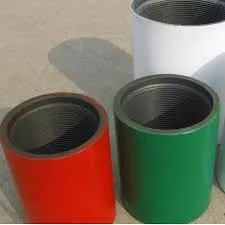- Afrikaans
- Albanian
- Amharic
- Arabic
- Armenian
- Azerbaijani
- Basque
- Belarusian
- Bengali
- Bosnian
- Bulgarian
- Catalan
- Cebuano
- Corsican
- Croatian
- Czech
- Danish
- Dutch
- English
- Esperanto
- Estonian
- Finnish
- French
- Frisian
- Galician
- Georgian
- German
- Greek
- Gujarati
- Haitian Creole
- hausa
- hawaiian
- Hebrew
- Hindi
- Miao
- Hungarian
- Icelandic
- igbo
- Indonesian
- irish
- Italian
- Japanese
- Javanese
- Kannada
- kazakh
- Khmer
- Rwandese
- Korean
- Kurdish
- Kyrgyz
- Lao
- Latin
- Latvian
- Lithuanian
- Luxembourgish
- Macedonian
- Malgashi
- Malay
- Malayalam
- Maltese
- Maori
- Marathi
- Mongolian
- Myanmar
- Nepali
- Norwegian
- Norwegian
- Occitan
- Pashto
- Persian
- Polish
- Portuguese
- Punjabi
- Romanian
- Russian
- Samoan
- Scottish Gaelic
- Serbian
- Sesotho
- Shona
- Sindhi
- Sinhala
- Slovak
- Slovenian
- Somali
- Spanish
- Sundanese
- Swahili
- Swedish
- Tagalog
- Tajik
- Tamil
- Tatar
- Telugu
- Thai
- Turkish
- Turkmen
- Ukrainian
- Urdu
- Uighur
- Uzbek
- Vietnamese
- Welsh
- Bantu
- Yiddish
- Yoruba
- Zulu
pup joint specifications
Understanding Pup Joint Specifications in Oil and Gas Industry
In the oil and gas industry, the efficiency and safety of drilling operations are paramount. One of the critical components used in drilling is the pup joint. Pup joints are short pipe sections that are added to a drill string or production string to achieve the desired length or for other specific purposes. Understanding pup joint specifications is essential for ensuring that drilling operations run smoothly and safely.
What is a Pup Joint?
A pup joint is a type of pipe that is typically much shorter than standard lengths of tubulars, which are usually 30, 40, or even 50 feet long. Pup joints can range in length but are usually found in lengths of 2 to 10 feet. They are manufactured from the same materials as the main pipe of a drill string, primarily steel, and can be welded or threaded to fit into existing sections of the string.
Pup joints serve various functions, including
1. Adjusting Length They can help to achieve the required length of the drill string or production string. 2. Compensation for Equipment They can be used to make up for lengths lost from other equipment, such as reducers or specialty joints. 3. Field Adjustments In situations where precise depth is crucial, pup joints provide a convenient way to adjust the length of the drill string.
Specifications of Pup Joints
Pup joint specifications are critical for ensuring the integrity and performance of the joints under the high-pressure and high-temperature conditions often encountered in drilling operations
. The specifications include several key factors1. Material Grade Pup joints are typically made from carbon steel, alloy steel, or stainless steel. The specific material used depends on factors such as the environmental conditions they will be exposed to, the type of fluids in contact with them, and the required strength.
pup joint specifications

2. Dimensions The diameter and wall thickness of pup joints must meet specific standards. Common sizes include 2-3/8, 2-7/8, and larger diameters used for various applications. The wall thickness is also specified to ensure it can withstand the forces and pressures encountered during operation.
3. Connection Type Pup joints can be manufactured with various connection types, including threaded connections such as American Petroleum Institute (API) standard threads or non-standard connections designed for specific applications. The type of connection affects how the pup joint will integrate with the overall drilling string.
4. Pressure Rating Each pup joint has a specified pressure rating, indicating the maximum pressure it can safely withstand. This rating is crucial in determining how the pup joint will perform in high-pressure environments. The pressure rating will align with other components of the drilling string to ensure overall compatibility.
5. Coating and Protection Depending on the environment, pup joints may require special coatings or treatments to prevent corrosion and wear. These can include galvanizing, painting, or applying specialized coatings designed for harsh conditions.
Importance of Meeting Specifications
Adhering to specified pup joint standards is of utmost importance for several reasons
- Safety The oil and gas industry is inherently dangerous, and using components that do not meet specifications can lead to catastrophic failures. Ensuring that pup joints meet rigorous standards reduces the risk of accidents. - Efficiency Using proper specifications ensures that the drilling operations run efficiently, minimizing downtime due to equipment failure or the need for replacements. - Cost-Effectiveness Non-compliance with specifications can lead to increased costs in repairs and replacements, not to mention the potential for loss of production.
Conclusion
Pup joints are essential components in drilling operations, and understanding their specifications is vital for maintaining safety and efficiency. By ensuring that the materials, dimensions, connections, and pressure ratings of pup joints meet industry standards, operators can significantly reduce risks and enhance operational effectiveness. As the oil and gas sector continues to evolve, the importance of adhering to specifications will only grow, making it an area worthy of continued attention and diligence.
-
Tubing Pup Joints: Essential Components for Oil and Gas OperationsNewsJul.10,2025
-
Pup Joints: Essential Components for Reliable Drilling OperationsNewsJul.10,2025
-
Pipe Couplings: Connecting Your World EfficientlyNewsJul.10,2025
-
Mastering Oilfield Operations with Quality Tubing and CasingNewsJul.10,2025
-
High-Quality Casing Couplings for Every NeedNewsJul.10,2025
-
Boost Your Drilling Efficiency with Premium Crossover Tools & Seating NipplesNewsJul.10,2025







